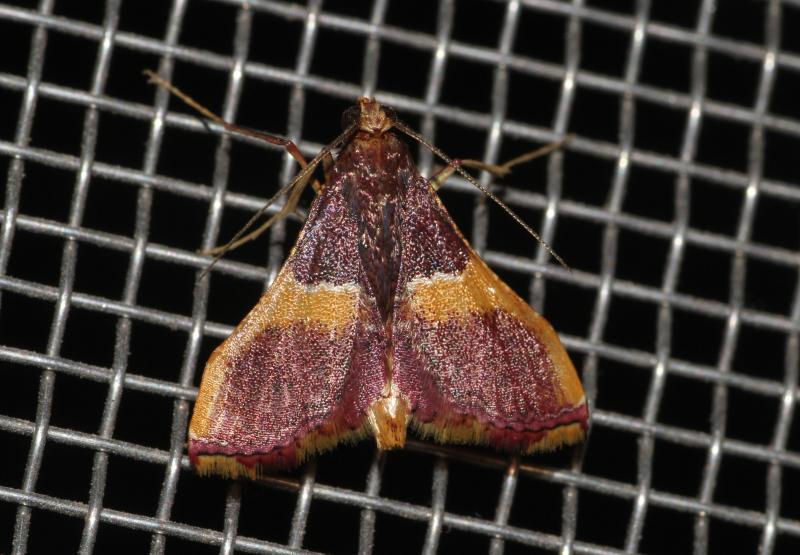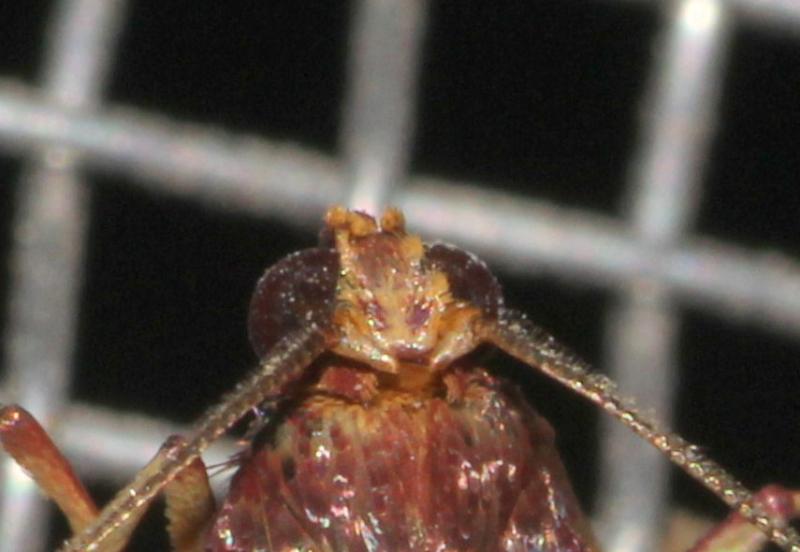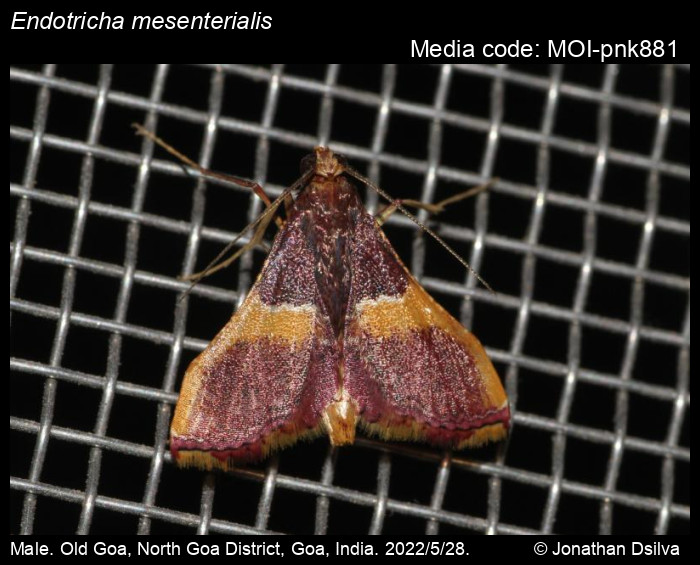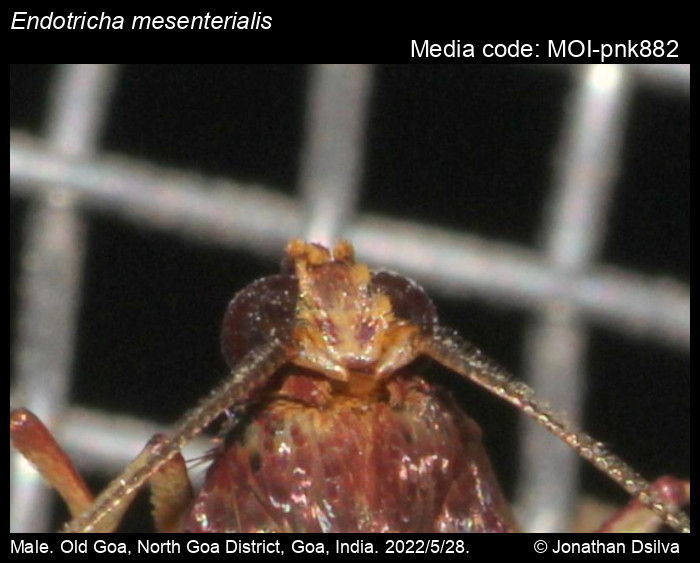Image


Gender (optional)
Life stage
Email (of contributor)
jd1073@yahoo.com
Notes (optional)
JD : Thanks for the clarity. I have added a cropped image of the antennae with base visible. There is clearly no basal spine visible. Whalley mentions that olivacealis occurs alongside mesenterialis in India only in the Annamalai Hills,
Already on website.
cf
SS: I would agree with this provisionally. However, see notes below.
Similar species: Endotricha olivacealis (Bremer, 1864), which is part of the mesenterialis group. Best to get an image of the base of antennae next time.
Whalley, P. E. S. 1963.A revision of the World species of the genus Endroticha Zeller (Lepidoptera: Pyralidae). Bull. Br. Mus. nat. Hist. (Ent.) 13 (11): 422. Text at https://archive.org/details/bulletinofbritis13entoond/page/422/mode/1up?view=theater
Whalley (1963) mentions that olivacealis is best separated from mesenterialis by the shape of the basal segment of the antennae. (Pl. 11, fig 154 & 155) at https://archive.org/details/bulletinofbritis13entoond/page/n619/mode/1up?view=theater
E. mesenterialis has a spine on the basal joint of the base of antennae, which olivacealis lacks.
JD : Thanks for the clarity. I have added a cropped image of the antennae with base visible. There is no basal spine.
SS: Agree with ID.
Already on website.
cf
SS: I would agree with this provisionally. However, see notes below.
Similar species: Endotricha olivacealis (Bremer, 1864), which is part of the mesenterialis group. Best to get an image of the base of antennae next time.
Whalley, P. E. S. 1963.A revision of the World species of the genus Endroticha Zeller (Lepidoptera: Pyralidae). Bull. Br. Mus. nat. Hist. (Ent.) 13 (11): 422. Text at https://archive.org/details/bulletinofbritis13entoond/page/422/mode/1up?view=theater
Whalley (1963) mentions that olivacealis is best separated from mesenterialis by the shape of the basal segment of the antennae. (Pl. 11, fig 154 & 155) at https://archive.org/details/bulletinofbritis13entoond/page/n619/mode/1up?view=theater
E. mesenterialis has a spine on the basal joint of the base of antennae, which olivacealis lacks.
JD : Thanks for the clarity. I have added a cropped image of the antennae with base visible. There is no basal spine.
SS: Agree with ID.
Name for copyright (do not include copyright symbol)
Jonathan Dsilva
Location (type location name here, or create a new location below under "Choose on the map")
HighLighted Contributions
No
Species Node
Overwrite img


Organism
Butterfly
Moth Taxon search:
Month
May
Year
2022
Day
28
Choose copyright license
Copyrighted (all rights reserved)